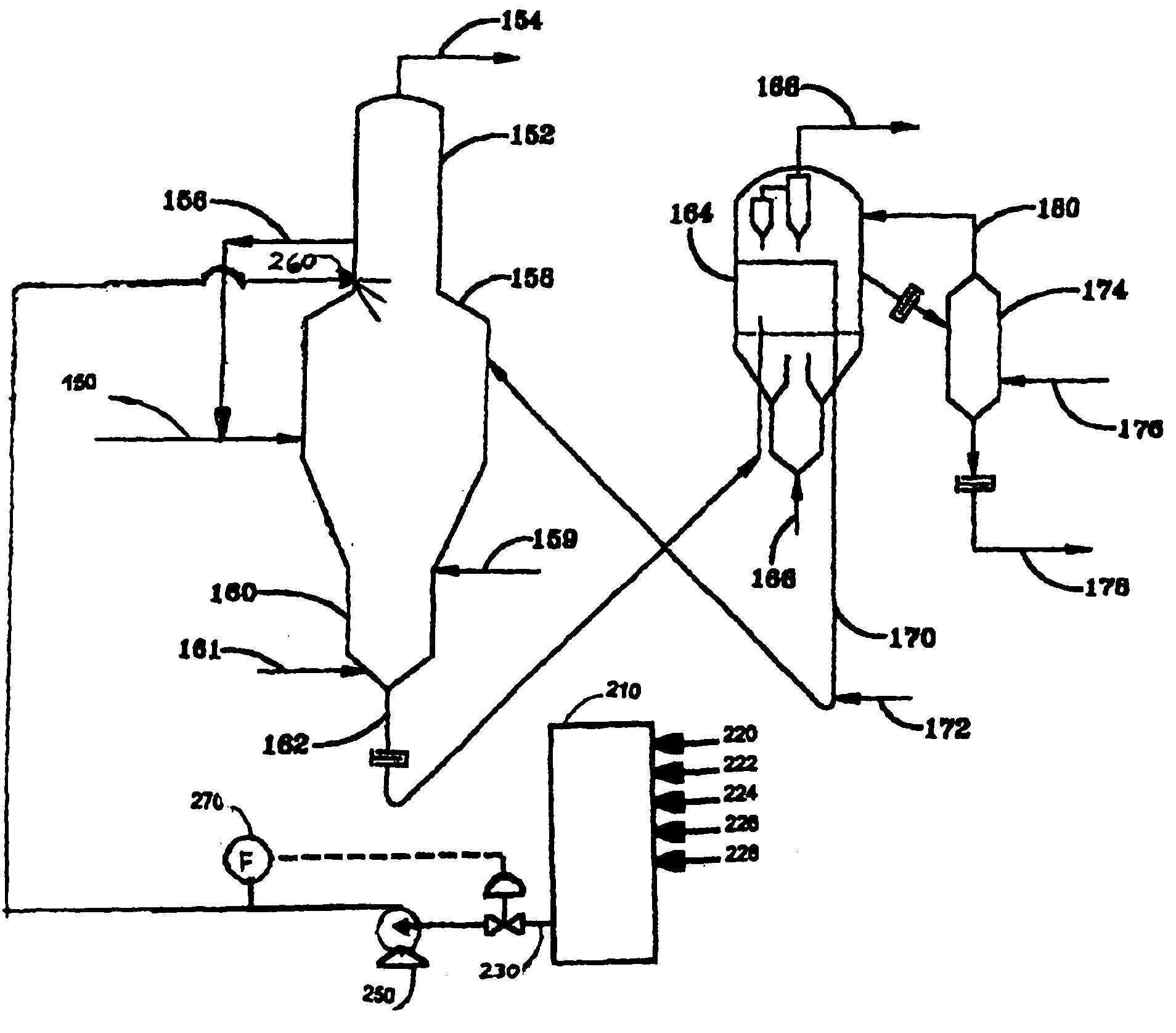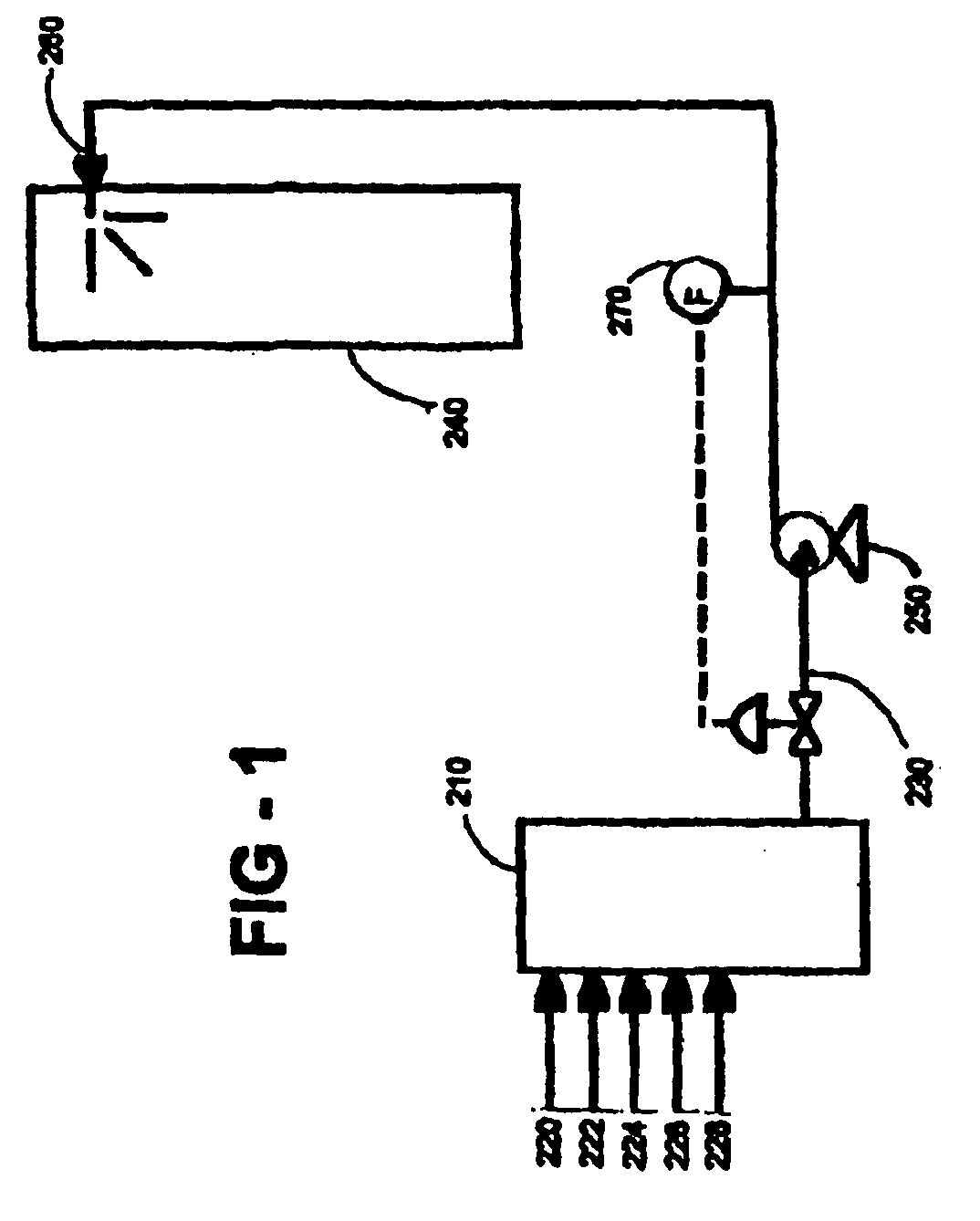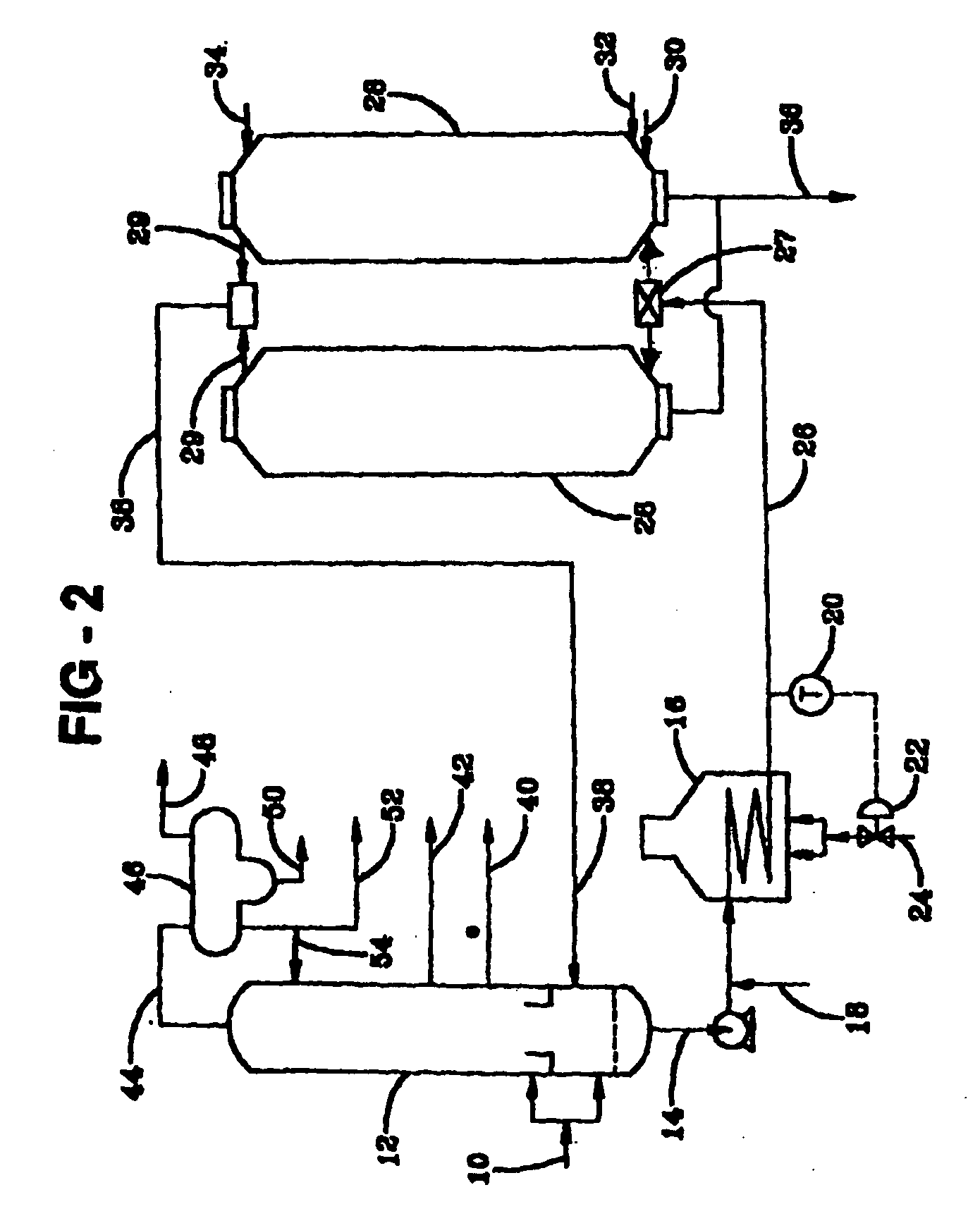System and Method for Introducing an Additive into a Coking Process to Improve Quality and Yields of Coker Products
a coking process and additive technology, applied in the field of thermal coking processes, can solve the problems of limiting refinery throughput, economic further distillation, and materials that are not suitable for catalytic operations, and achieve the effects of promoting coking, different chemical and physical characteristics, and promoting coking
- Summary
- Abstract
- Description
- Claims
- Application Information
AI Technical Summary
Benefits of technology
Problems solved by technology
Method used
Image
Examples
example 1
[0102]In fuel grade coke applications, the delayed coking feedstocks are often residuals derived from heavy, sour crude, which contain higher levels of sulfur and metals. As such, the sulfur and metals (e.g. vanadium and nickel) are concentrated in the pet coke, making it usable only in the fuel markets. Typically, the heavier, sour crudes tend to cause higher asphaltene content in the coking process feed. Consequently, the undesirable ‘heavy tail’ components (e.g. PAHs) are more prominent and present greater problems in downstream catalytic units (e.g. cracking). In addition, the higher asphaltene content (e.g. >15 wt. %) often causes a shot coke crystalline structure, which may cause coke cutting ‘hot spots’ and difficulties in fuel pulverization.
[0103]In these systems, an example of the present invention provides the selective cracking and coking of the ‘heavy tail’ components (e.g. PAHs) in coker gas oil of the traditional delayed coking process. Typically, gas oil end points ar...
example 2
[0107]In anode grade coke applications, examples of the present invention may provide substantial utility for various types of anode grade facilities: (1) refineries that currently produce anode coke, but want to add opportunity crudes to their crude blends to reduce crude costs and (2) refineries that produce pet coke with sufficiently low sulfur and metals, but shot coke content is too high for anode coke specifications. In both cases, examples of the present invention may be used to reduce shot coke content to acceptable levels, even with the presence of significant asphaltenes (e.g. >15 wt. %) in the coker feed.
[0108]With an exemplary embodiment of the present invention, refineries that currently produce anode quality coke may often add significant levels of heavy, sour opportunity crudes (e.g. >5 wt. %) without causing shot coke content higher than anode coke specifications. That is, an exemplary embodiment of the present invention converts the highest boiling point materials i...
example 3
[0112]In needle coke applications, the coking process uses special coker feeds that preferably have high aromatic content, but very low asphaltene content. These types of coker feeds are necessary to achieve the desired needle coke crystalline structure. These delayed coker operations have higher than normal heater outlet temperatures and recycle rates. With an exemplary embodiment of the present invention, these coking processes may maintain needle coke crystalline structure with higher concentrations of asphaltenes and lower concentrations of aromatics in the coker feed. Also, an exemplary embodiment of the present invention may reduce the recycle rate required to produce the needle coke crystalline structure, potentially increasing the coker capacity and improving coker operations and maintenance. In this manner, an exemplary embodiment of the present invention may decrease coker feed costs, while potentially increasing needle coke production and profitability.
PUM
| Property | Measurement | Unit |
|---|---|---|
| boiling points | aaaaa | aaaaa |
| temperature | aaaaa | aaaaa |
| temperature | aaaaa | aaaaa |
Abstract
Description
Claims
Application Information
 Login to View More
Login to View More - R&D
- Intellectual Property
- Life Sciences
- Materials
- Tech Scout
- Unparalleled Data Quality
- Higher Quality Content
- 60% Fewer Hallucinations
Browse by: Latest US Patents, China's latest patents, Technical Efficacy Thesaurus, Application Domain, Technology Topic, Popular Technical Reports.
© 2025 PatSnap. All rights reserved.Legal|Privacy policy|Modern Slavery Act Transparency Statement|Sitemap|About US| Contact US: help@patsnap.com



